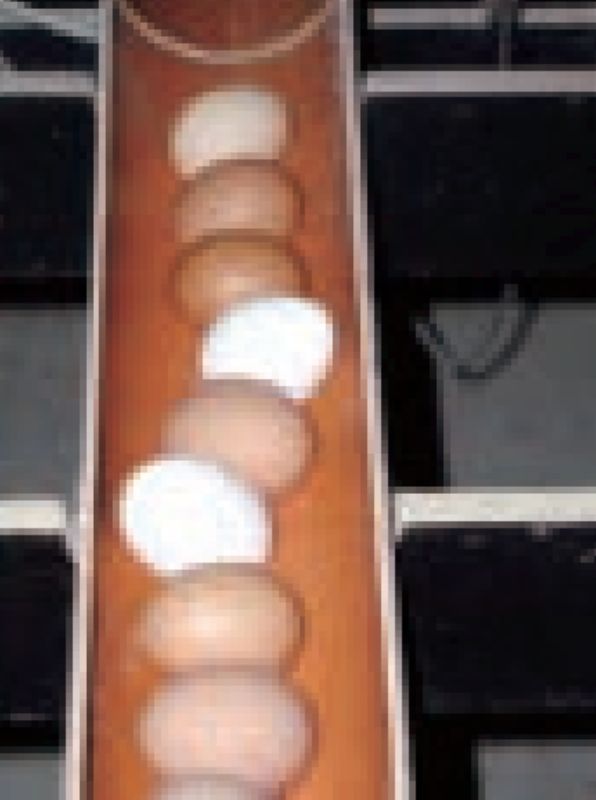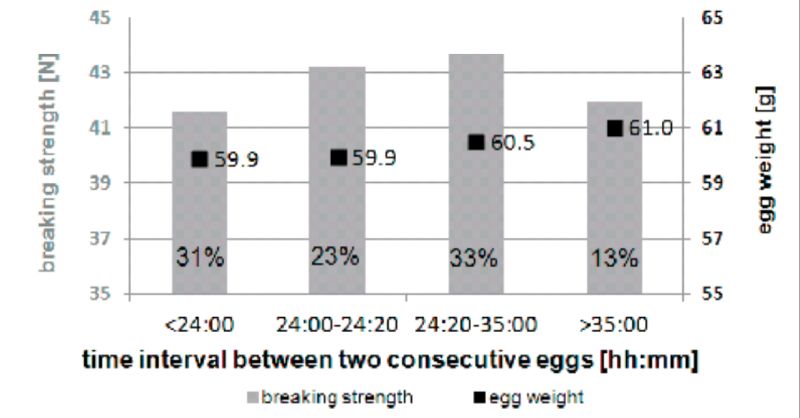Introduction
The genetic potential of layers today is sufficient to produce a high quality egg on more than 100 subsequent days. With a programme of 16 hours light per day, such big clutches require time intervals of around 24 hours. Shortened time intervals as well as
fewer days without any oviposition between two consecutive laid eggs are the last but not least consequences of improved laying
performance. However, this development in the cyclic nature of a hen may not take place at the expense of egg quality. Therefore,
eggs from hens with varying oviposition intervals were tested for this study to determine the influence of the reproduction cycle
length on egg weight, breaking strength and egg shape.
Material
239 pedigreed offspring of a
LOHMANN BROWN line established at the experimental station
Thalhausen, were specifically tested
with the Weihenstephan Funnel
Nest Box.
 A hen leaving the Funnel Nest Box
A hen leaving the Funnel Nest Box
Captured traits for 1,559 eggs collected
over a period of 9 consecutive days at
an age of 27 weeks:
Exact oviposition time
time interval
egg weight
egg shape
breaking strenght
 Egg collection of one nest
Egg collection of one nest
 Egg weighing (left) and measuring breaking strength (right) of
hen-specific assigned eggs.
Results
Egg weighing (left) and measuring breaking strength (right) of
hen-specific assigned eggs.
Results
Changes in breaking strength and egg weight in regard to
oviposition time as the percentage of observations in
each time category.

Eggs which are laid early in the morning are often eggs which
are laid at the beginning of one clutch. These eggs are higher
in egg weight and their egg shape is rounder than eggs which
are laid later during the day.
Changes in breaking strength and egg weight for different time interval categories and their percentage.

Despite a small increase in egg weight, breaking strength is also higher for eggs laid after longer time intervals
Conclusion
In regard to egg quality and other performance criteria, there is an optimum time interval of between 24 hours to 24 hours and
15 minutes. Hens which lay eggs within this time frame are the most economical layers. They are distinguished by the highest egg
mass output combined with good egg quality
Dr.Wiebke Icken, Dr. Matthias Schmutz, Dr.David Cavero, Stefan Thurner, Prof. Dr.Rudolf Preisinger.
 Linkedin
Linkedin
 A hen leaving the Funnel Nest Box
A hen leaving the Funnel Nest Box



